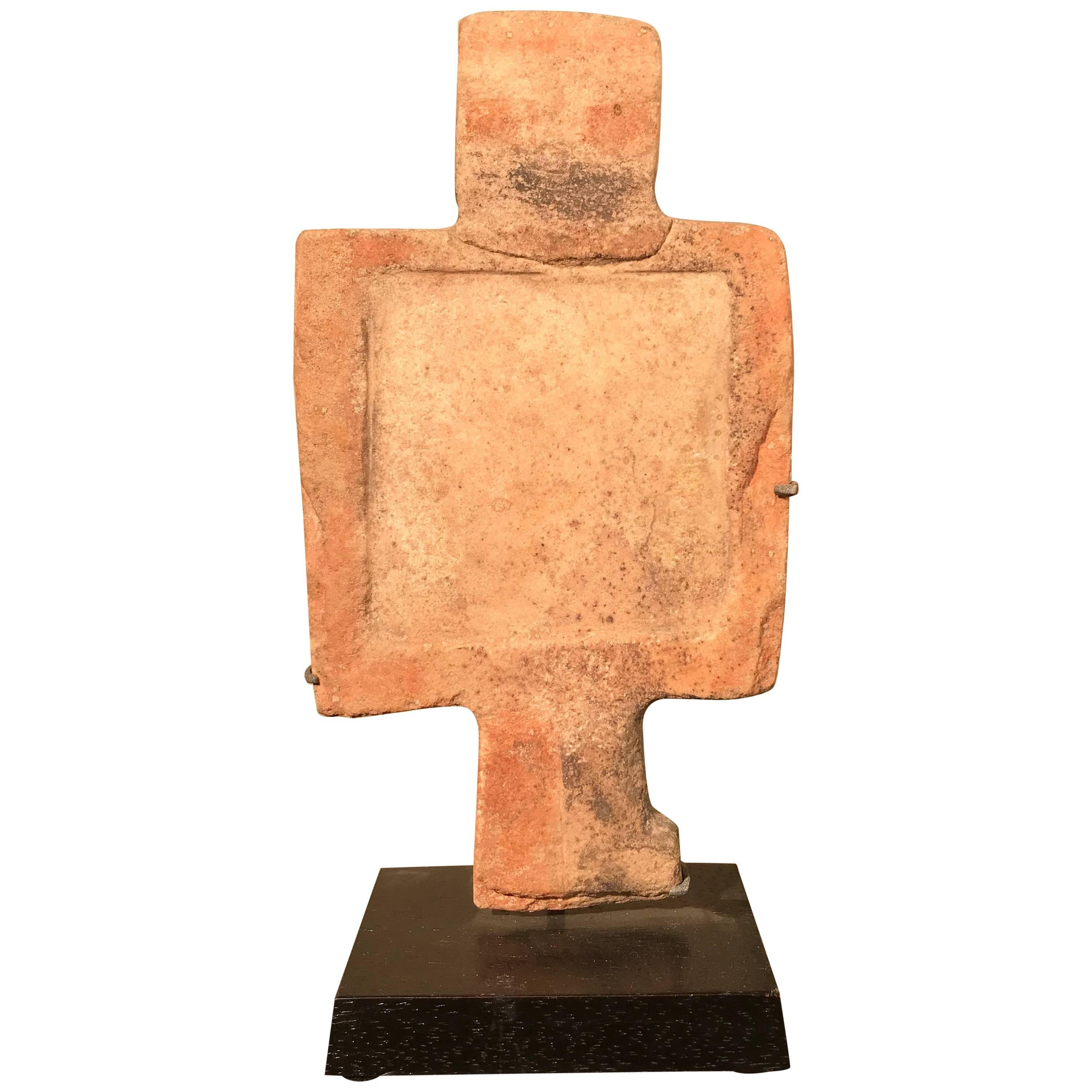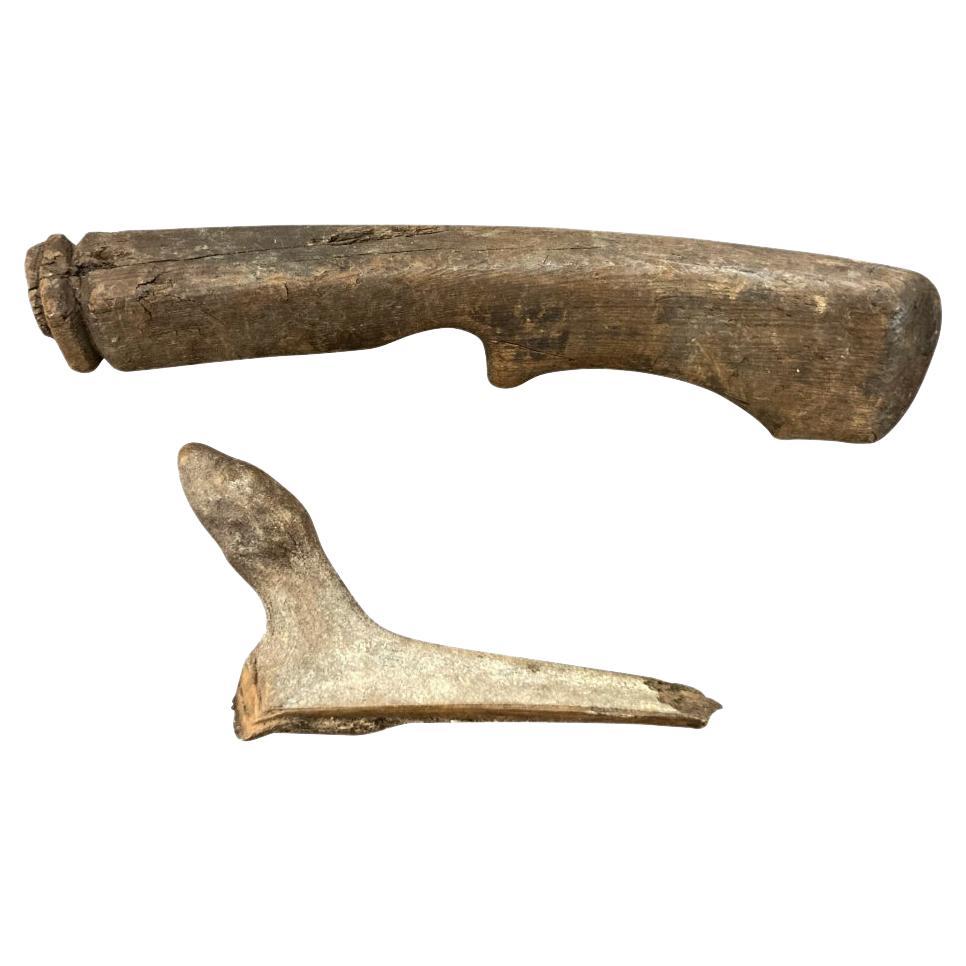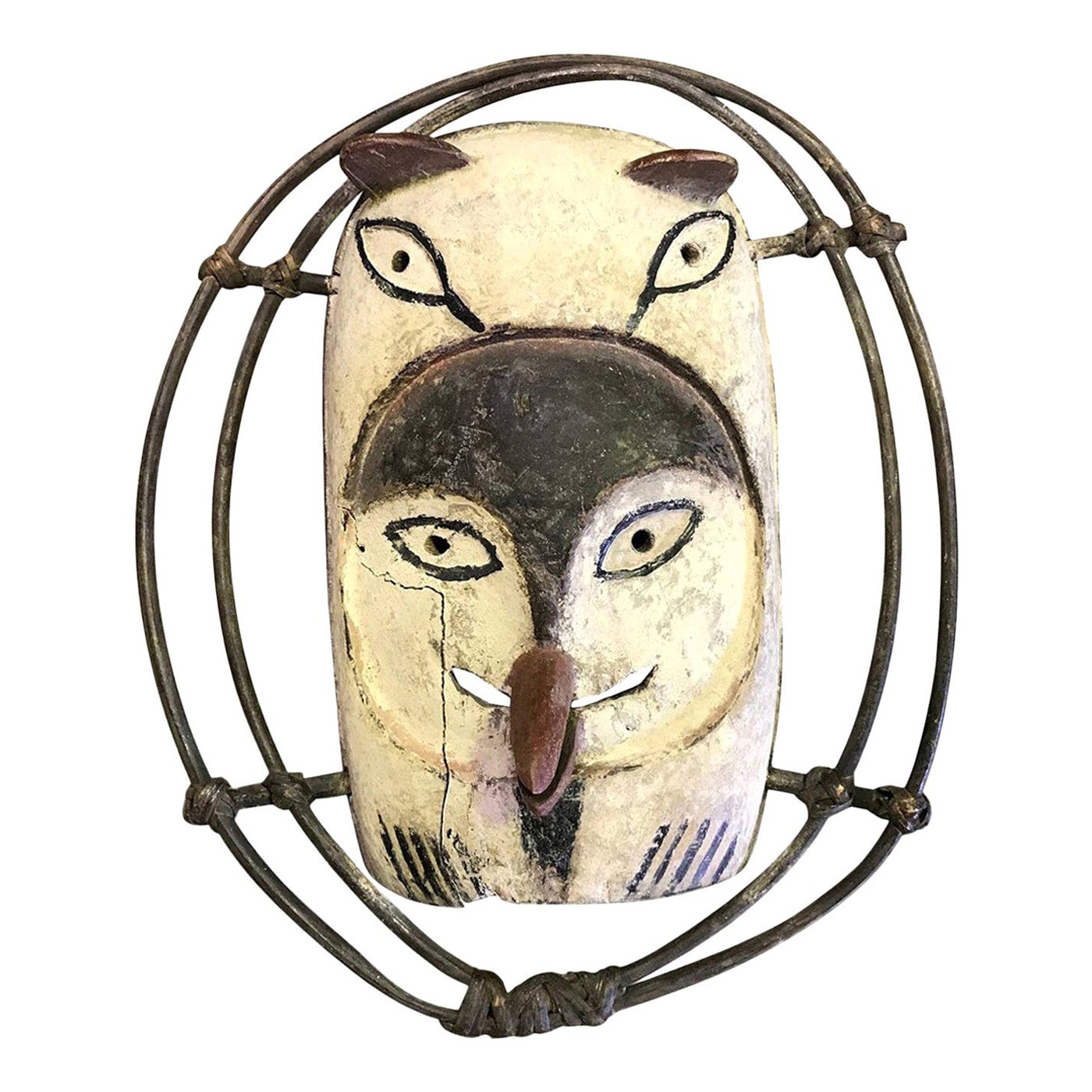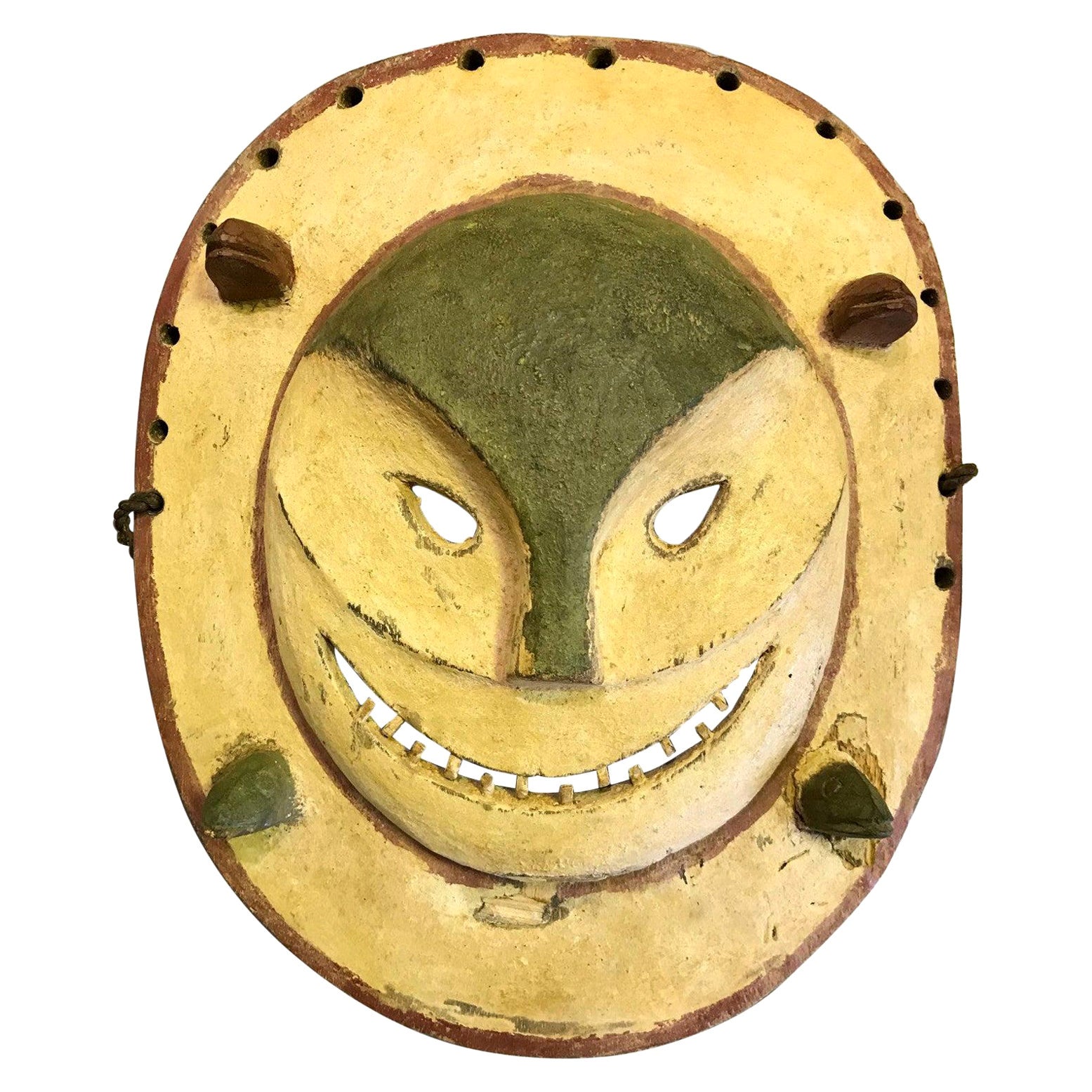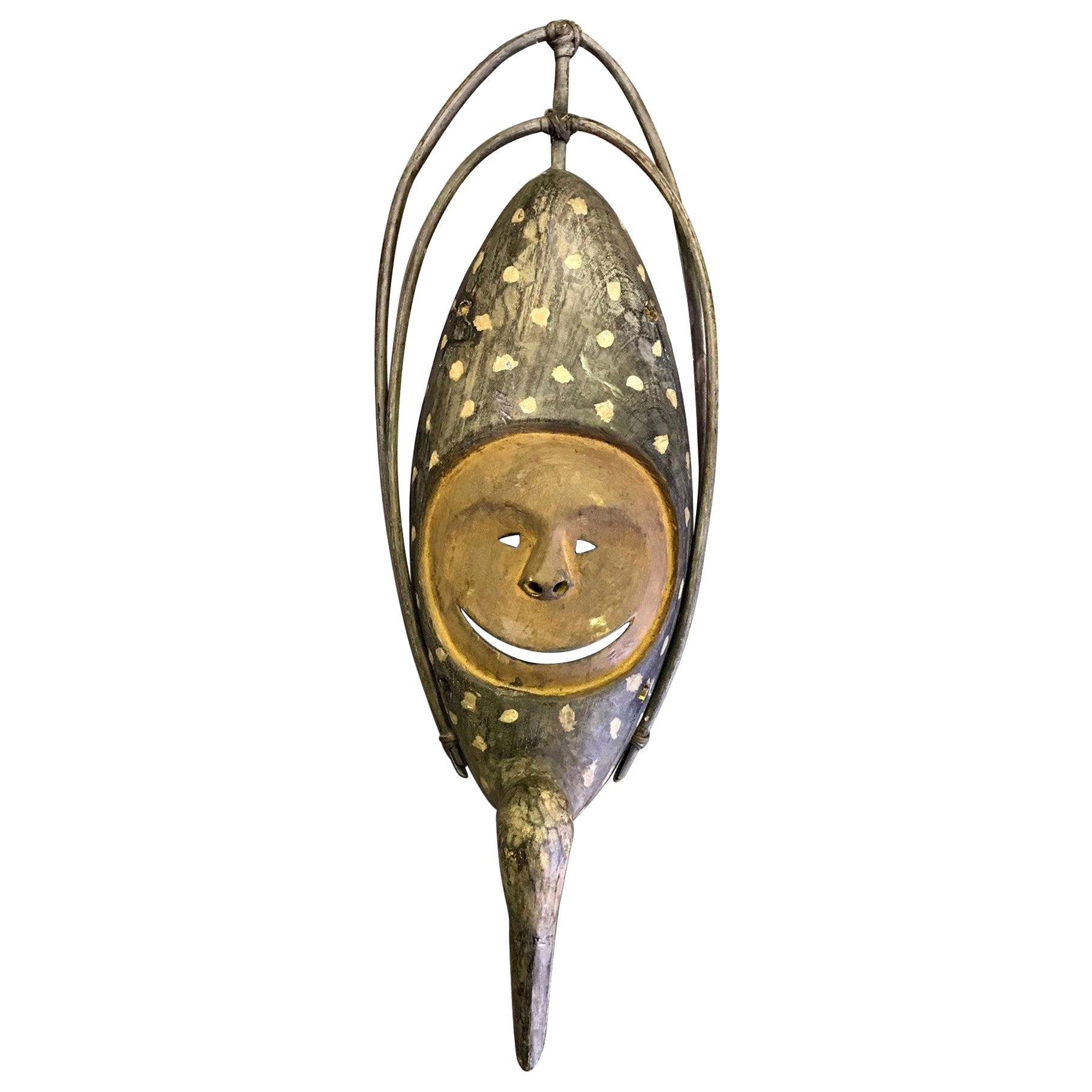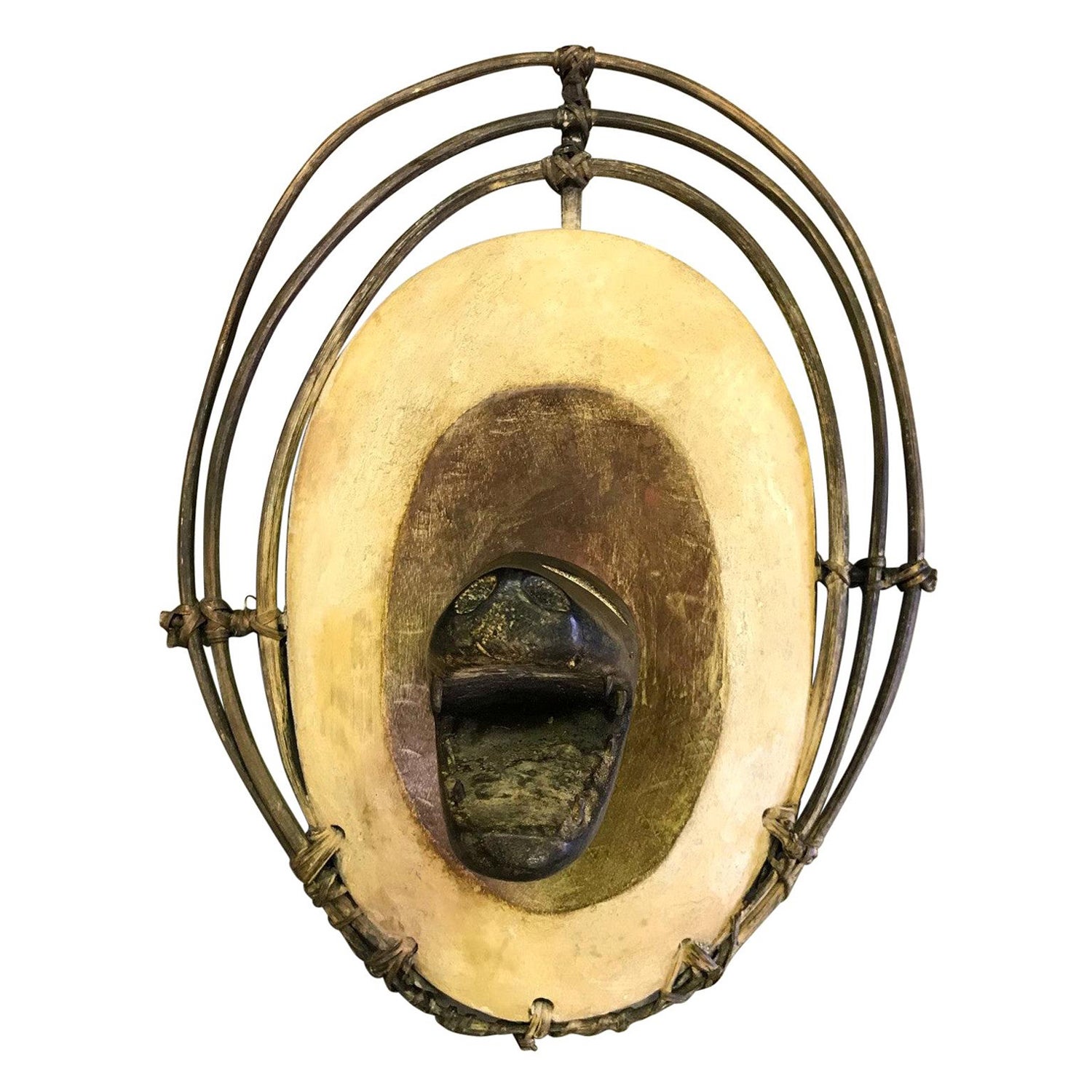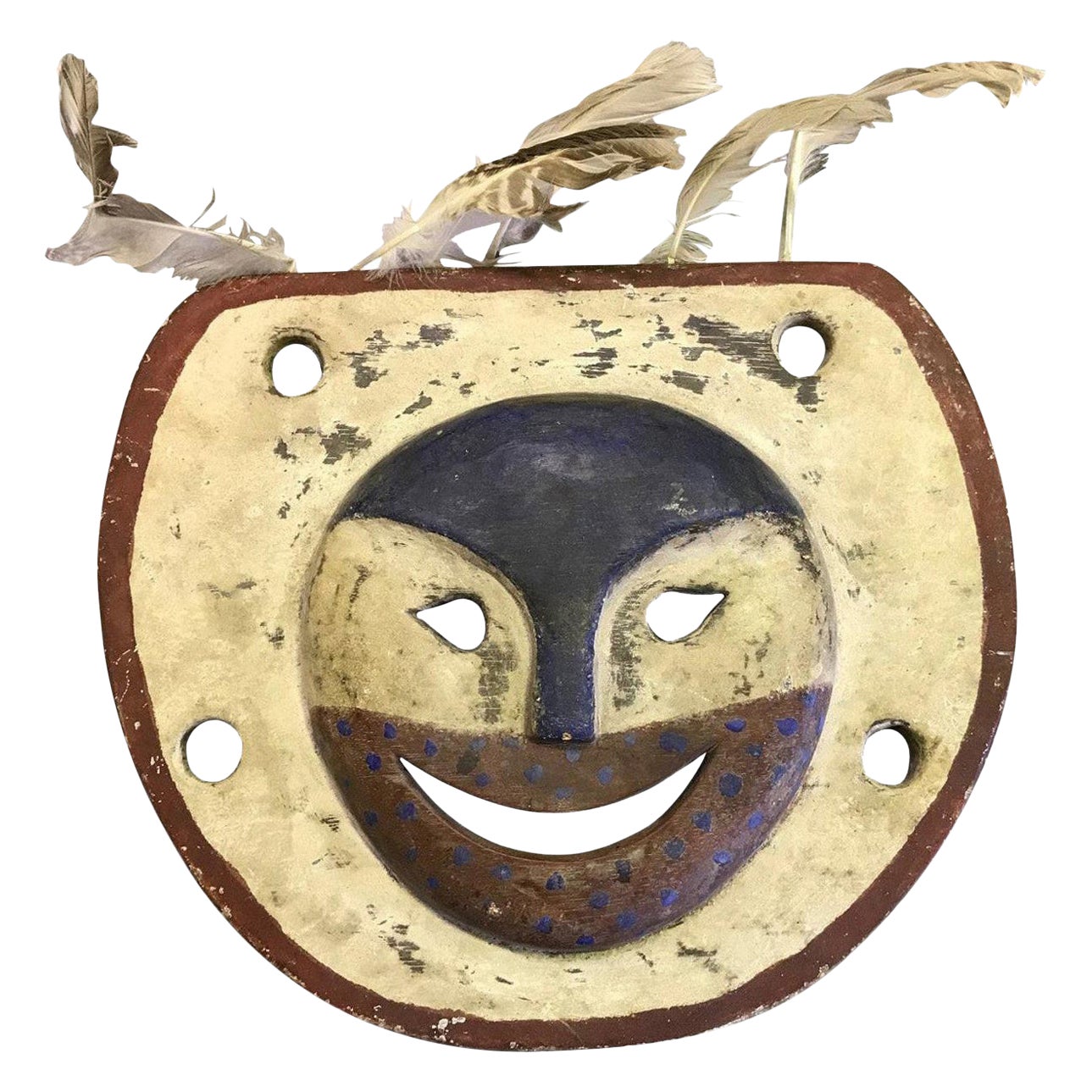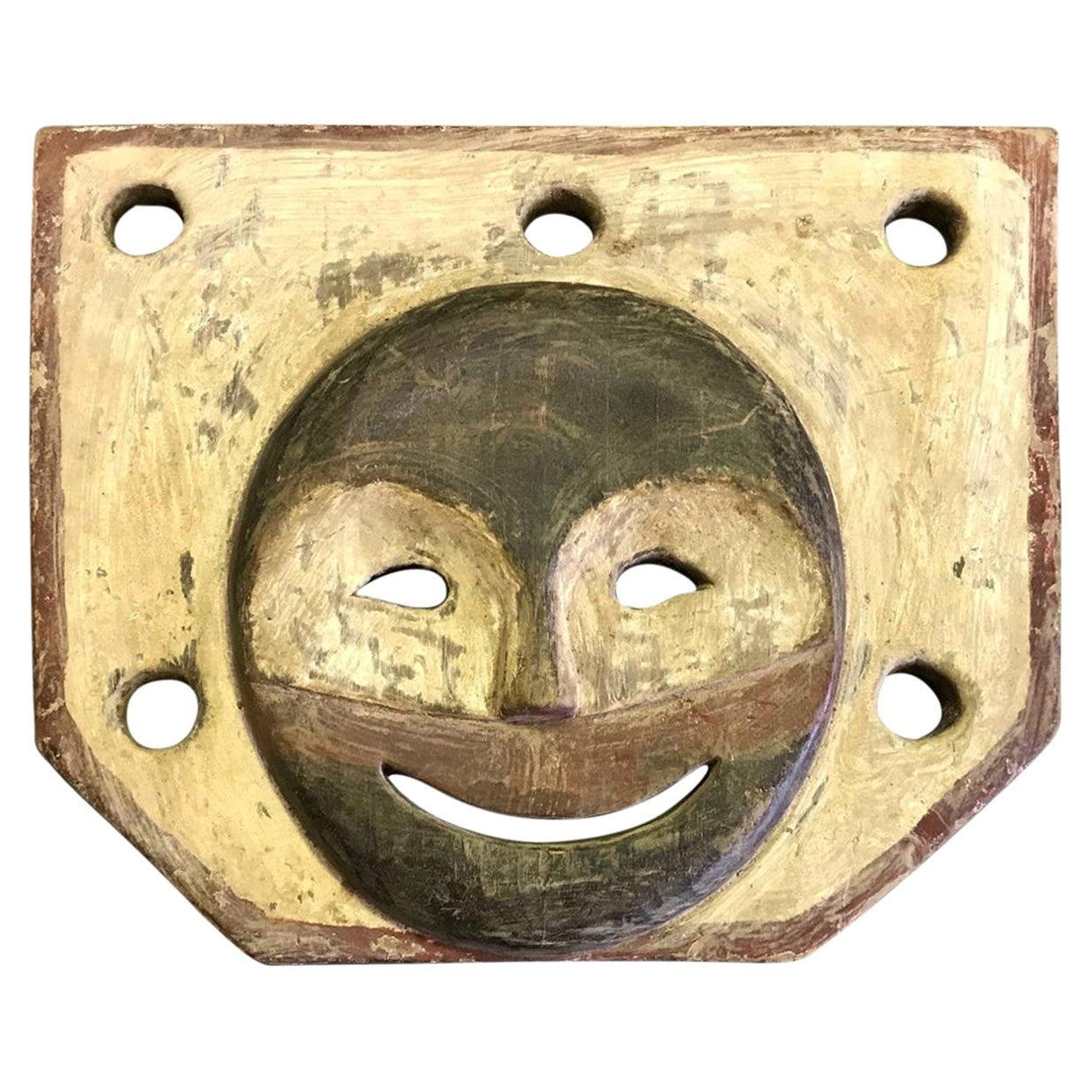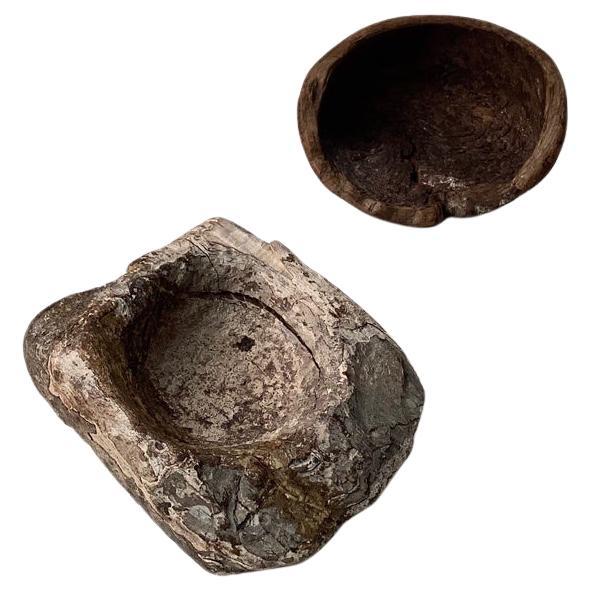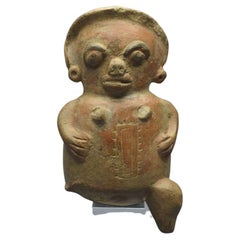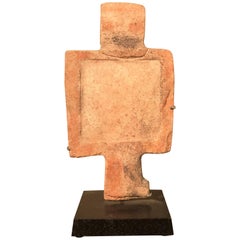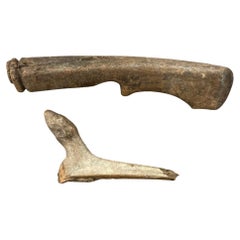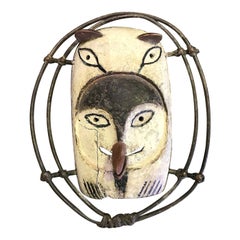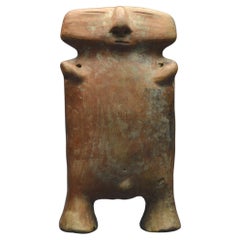
Colombia, 800–1200 AD, Quimbaya Culture, Anthropomorphic Terracotta Statuette
View Similar Items
Want more images or videos?
Request additional images or videos from the seller
1 of 8
Colombia, 800–1200 AD, Quimbaya Culture, Anthropomorphic Terracotta Statuette
About the Item
- Dimensions:Height: 7.13 in (18.1 cm)Width: 4.06 in (10.3 cm)Depth: 2.17 in (5.5 cm)
- Materials and Techniques:Terracotta
- Place of Origin:Colombia
- Period:
- Date of Manufacture:800 - 1200 AD
- Condition:
- Seller Location:VILLEFONTAINE, FR
- Reference Number:1stDibs: LU8421234140632
About the Seller
No Reviews Yet
Vetted Seller
These experienced sellers undergo a comprehensive evaluation by our team of in-house experts.
Established in 2017
1stDibs seller since 2023
More From This SellerView All
- Mexico, 9th-16th Century, Huastec Culture, Small Anthropomorphic Potion VaseLocated in VILLEFONTAINE, FRMexico Huastec Culture / 800 – 1500 AD Small anthropomorphic vase used by shamans for the preparation of potions. It represents a seated figure with a globular body with a small ch...Category
Antique 15th Century and Earlier Native American Objects
MaterialsTerracotta
- COSTA Rica, 1000 – 1500 Ad, Guanacaste, Nicoya Culture, Terracotta StatuetteLocated in VILLEFONTAINE, FRCosta Rica / Region of Nicoya Culture Guanacaste / 1000 – 1500 AD Anthropomorphic statuette representing a woman originally resting on three feet. The arms are glued along the...Category
Antique 15th Century and Earlier Costa Rican Sculptures and Carvings
MaterialsTerracotta
- Mid-20th Century, Dem. Rep. Congo, Tabwa Culture, Ancient Anthropomorphic FetishLocated in VILLEFONTAINE, FROld anthropomorphic statuette with shiny patina DRC (ex Zaire), Tabwa people Mid-20th Century The statuette represents a standing female character, the feet symbolically repre...Category
Mid-20th Century Congolese Tribal Art
MaterialsWood
- Italian Renaissance, 16th Century, Bronze Statuette, Young Man with a DolphinLocated in VILLEFONTAINE, FRItaly, Renaissance period, 16th century, Bronze statuette representing a young man with a dolphin. Italy, possibly Florence Renaissance period, 16th century Rare bronze statuette r...Category
Antique 16th Century Italian Antiquities
MaterialsBronze
- Mid-20th Century, Tanzania, Nyamwezi Culture, Old Fetish with Traces of LibationLocated in VILLEFONTAINE, FROld anthropomorphic fetish with traces of libations DRC (ex Zaire) First half of the 20th century Fetish representing a standing man, his legs slightly bent resting on large f...Category
Mid-20th Century Congolese Tribal Art
MaterialsHorn, Wood
- India, 8th - 10th Century, Jain Culture, Stele fragment with two TirthankarasLocated in VILLEFONTAINE, FRFragment of a stele representing two Tirthankaras India Jain culture VIII – Xth century The two saints are represented naked, seated in a small niche, each in a position of medita...Category
Antique 15th Century and Earlier Indian Sculptures and Carvings
MaterialsSandstone
You May Also Like
- Ancient American "Human Effigy" Stone Paint Pallet, Anasazi Culture 900 ADLocated in South Burlington, VTEarly American Pre-Historic Human Effigy Stone Paint Pallet, Anasazi culture 900 AD All stone carvings from America's Prehistoric southwest are scarce. The majority of known carved stones come from the Mimbres, Hohokam or Casas cultures. So examples of stone carvings from the Anasazi culture (circa 900–1300 AD) are rare especially human forms which are the rarest and some consider most desirable. This pallet is likely unique. The distinguishing characteristic of our paint pallet from the Anasazi culture is its creation from red sandstone- a material that was not used by the Mimbres, Hohokam or Casas cultures. Dimensions: 9.25 inches tall, 4.87 inches wide Quality: it exhibits no less than seven distinct pigment colors on the surface. The obverse has a distinctive head with three dimensional eyes and nose; there are four horizontal bands of color: red, white, dark red/white and black. The center of the pallet has a distinctive white pigment and the border is executed in both red and black. There are two well-defined legs, one red and the other black, which terminate in distinctive feet. On the reverse we find in the center seven clearly defined concentric painted rings, each a different color. Provenance: old New England collection Lifetime guarantee of authenticity: All of our works of art come with our lifetime authenticity guarantee. Our gallery has been dealing in authentic Native...Category
Antique 15th Century and Earlier American Native American Objects
MaterialsSandstone
- Two Antique Inuit/ Eskimo Anthropomorphic Tool HandlesLocated in Bridgeport, CTTwo 19th Century or possibly earlier Inuit Tool Handles, one of carved wood and the other of carved bone. The bone handle bears the unmistakable form of an upturned Seal’s head, a fa...Category
Antique 19th Century North American Native American Native American Objects
MaterialsBone, Wood
- Yupik Yup'ik Native American Alaska Carved Polychrome Wood Anthropomorphic MaskLocated in Studio City, CAA fantastic and somewhat playful mask by the Yup'ik (Yupik) aboriginal, indigenous people of South-Western & South Central Alaska. The Yup'ik people, who are related to the Inuit peoples, have a long history of ceremonial mask making. Yup'ik masks were originally and specifically designed by Shamans and made to be worn by these spiritual leaders in Winter tribal dances and sacred ceremonies. Traditionally, the masks were destroyed or discarded after use in these ceremonies. Very few of these masks survived. After Christian contact in the late 19th century, masked dancing was suppressed and the tradition all but died out. As more outsiders settled in Alaska at the turn of the century, masks were made by the Yup'ik people to sell or trade for necessary goods. It is likely that this mask was created some years later for this purpose. In the 20th century, Yup'ik mask had a profound influence on many renowned surrealist artists including, Max Ernst, Joan Miro, Leonora Carrington, Victor Brauner, and most notably Andre Breton who was an avid collector of Yup'ik masks. This fantastic anthropomorphic mask is carved of lighter wood, hand painted and decorated with pigment, and held together with natural fiber. The mask seems to represent some sort of smiling, benevolent spirit or character with its four eyes, bird beak, and cat-like ears. The mask is from a French collection. We were told that this mask, as well as others in the collection we have listed, was acquired originally in the 1950s-1960s in Alaska and the Yukon territory in Canada but as we have no way to verify or authenticate this. Please note we are listing the masks as decorative and not as actual tribal artifacts...Category
20th Century American Masks
MaterialsWood, Paint, Natural Fiber
- Yupik Yup'ik Native American Alaska Carved Polychrome Wood Anthropomorphic MaskLocated in Studio City, CAA truly fascinating mask by the Yup'ik (Yupik) aboriginal, indigenous people of South-Western & South Central Alaska. The Yup'ik people, who are related to the Inuit peoples, have a ...Category
20th Century American Masks
MaterialsNatural Fiber, Wood, Paint
- Yupik Yup'ik Native American Alaska Polychrome Wood Anthropomorphic Spirit MaskLocated in Studio City, CAA fantastic, somewhat sinister appearing mask by the Yup'ik (Yupik) aboriginal, indigenous people of South-Western & South Central Alaska. The Yup'ik people, who are related to the I...Category
20th Century American Masks
MaterialsWood, Paint
- Yupik Yup'ik Native American Alaska Carved Polychrome Wood Anthropomorphic MaskLocated in Studio City, CAA fantastic mask by the Yup'ik (Yupik) aboriginal, indigenous people of South-Western and South Central Alaska. The Yup'ik people, who are related to the Inuit peoples, have a long history of ceremonial mask making. Yup'ik masks were originally and specifically designed by Shamans and made to be worn by these spiritual leaders in winter tribal dances and sacred ceremonies. Traditionally, the masks were destroyed or discarded after use in these ceremonies. Very few of these masks survived. After Christian contact in the late 19th century, masked dancing was suppressed and the tradition all but died out. As more outsiders settled in Alaska at the turn of the century, masks were made by the Yup'ik people to sell or trade for necessary goods. It is likely that this mask was created some years later for this purpose. In the 20th century, Yup'ik mask had a profound influence on many renowned surrealist artists including, Max Ernst, Joan Miro, Leonora Carrington, Victor Brauner, and most notably Andre Breton who was an avid collector of Yup'ik masks. This fantastic anthropomorphic mask is carved of lighter wood, hand painted and decorated with pigment, and held together with natural fiber. A native bird can see seen attached to the smiling figure's chin. The mask is from a French collection. We were told that this mask, as well as others in the collection we have listed, was acquired originally in the 1950s-1960s in Alaska and the Yukon territory in Canada but as we have no way to verify or authenticate this. Please note we are listing the masks as decorative and not as actual tribal artifacts...Category
20th Century American Masks
MaterialsNatural Fiber, Wood, Paint
Recently Viewed
View AllMore Ways To Browse
Navajo 1930
Native American Pattern
Navajo Blankets
American Folk Head
American Folk Art Head
Trade Beads
Trading Beads
Navajo Woven Pillow
Native American Art Vintage
Navajo Pillows
1920 Navajo
Navajo 1920
Antique Cowboy
American Indian Wood
Used Cisco
Used Saddle Blankets
Saddle Blankets
Native American Carved Wood
